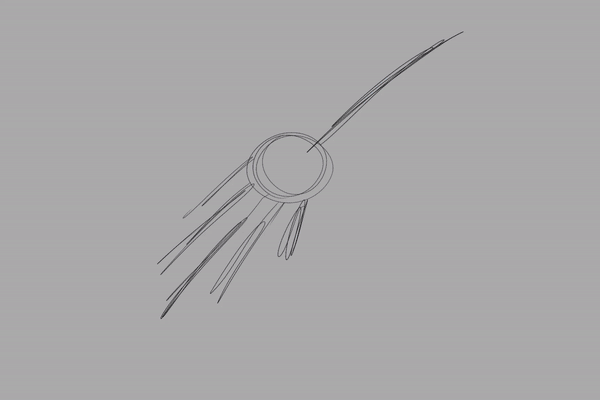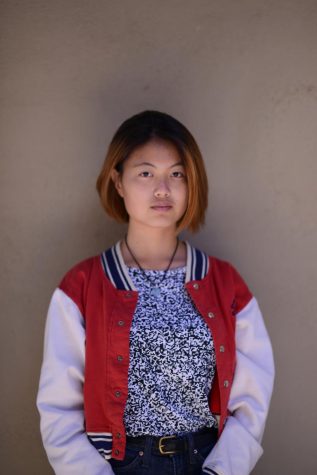The art of creating art
Taking the first step can be hard, but now’s the time to begin

In its essence, art is self-expression — some art just happens to be shared in some way. But if this judgment, this value-setting is your main hindrance, then there’s nothing stopping you from the actual creation of the art itself other than your own judgment — which, given the right mindset, you can also make into an art piece. After all, judgment is a form of emotion, too.
So we’re all at home now, all day every day, sheltering-in-place. While we’re busy flattening the curve, we’re also encouraged to take breaks, play sports, do art, be creative. Have you ever found yourself saying repeatedly that you’ve always wanted to do something? Now’s the time to start.
Let’s talk art — specifically, its creation. You might have heard of Ira Glass’s “The Gap,” a video inspiring artists and creators to continue their craft even after hitting a block, reminding them that the titular gap between their taste and their skill demonstrates their potential (If not, search it up. It’s great inspiration for working through blocks of any sort!).
Meanwhile, there’s still so many of you who haven’t even started creating art, saying that you’re not good enough, or that you wish you were.
I say, you haven’t even done it. You can’t be bad at something you haven’t done.
In its essence, art is self-expression — some art just happens to be shared in some way. But if this judgment, this value-setting is your main hindrance, then there’s nothing stopping you from the actual creation of the art itself other than your own judgment — which, given the right mindset, you can also make into an art piece. After all, judgment is a form of emotion, too.
At the end of the day, art, regardless of whether you think you’re good or bad at it, is a form of catharsis and emotional release. In a hackneyed old saying, all of the world’s masters were once amateurs, but there’s also nothing wrong with remaining an amateur.
Let’s break down that word. “Amateur” comes from the Latin verb amare, meaning “to love”. Despite its negative connotation today, there’s nothing inherently wrong with being or staying an amateur.
Technical skill doesn’t matter when it comes to this art you’ll be creating. What matters is the ability you gain almost instantly to let loose and express yourself as soon as you put pen to paper, turn on music for some interpretive dancing, monologue extemporaneously in the mirror or do whatever you choose.
Aside from the emotional benefits of art, freeing yourself is a great way to work through any problem or process any situation, like all the ambient panic of COVID-19. Regardless of what you’re doing, you can benefit from the fresh perspective or simple mental stimulation that artistic creation gifts you.
Albert Einstein famously played his violin, Lina. With no existing recordings, no one can know for sure whether he was a virtuoso violinist or not. All the same, it’s undeniable that music helped shape his thinking process and assisted in the formation of his theories, the most concrete example being his development of the theory of general relativity, throughout which he would play the piano and scribble notes down.
When we strip away public opinion, artists who are now publicly successful began their craft to express themselves or to create a monument of their own perspectives. Even classical artists, trained in their craft through rigorous technical schooling, develop quirks in their styles reflective of their personalities.
Much of this worry about not meeting both your own and others’ expectations continues well into an artist’s career, and perfectionism can be a real mental block. To that I say, just close your eyes, shut your ears and go.
If some aspect of your creation doesn’t go as planned, take it in stride. Whatever you do is your own creation, an expression of self that skips the conscious and flows directly into being. As American Painter Bob Ross once said, “We don’t make mistakes — we have happy accidents.” But even before that, you’ll need to break through your stasis and get cracking on art.
What’s stopping you?

Jin Tuan (12), co-design editor of the Winged Post, is a brown paper bag going through senior year. You're not quite sure what's in it, but whatever...


















![“[Building nerf blasters] became this outlet of creativity for me that hasn't been matched by anything else. The process [of] making a build complete to your desire is such a painstakingly difficult process, but I've had to learn from [the skills needed from] soldering to proper painting. There's so many different options for everything, if you think about it, it exists. The best part is [that] if it doesn't exist, you can build it yourself," Ishaan Parate said.](https://harkeraquila.com/wp-content/uploads/2022/08/DSC_8149-900x604.jpg)




![“When I came into high school, I was ready to be a follower. But DECA was a game changer for me. It helped me overcome my fear of public speaking, and it's played such a major role in who I've become today. To be able to successfully lead a chapter of 150 students, an officer team and be one of the upperclassmen I once really admired is something I'm [really] proud of,” Anvitha Tummala ('21) said.](https://harkeraquila.com/wp-content/uploads/2021/07/Screen-Shot-2021-07-25-at-9.50.05-AM-900x594.png)







![“I think getting up in the morning and having a sense of purpose [is exciting]. I think without a certain amount of drive, life is kind of obsolete and mundane, and I think having that every single day is what makes each day unique and kind of makes life exciting,” Neymika Jain (12) said.](https://harkeraquila.com/wp-content/uploads/2017/06/Screen-Shot-2017-06-03-at-4.54.16-PM.png)








![“My slogan is ‘slow feet, don’t eat, and I’m hungry.’ You need to run fast to get where you are–you aren't going to get those championships if you aren't fast,” Angel Cervantes (12) said. “I want to do well in school on my tests and in track and win championships for my team. I live by that, [and] I can do that anywhere: in the classroom or on the field.”](https://harkeraquila.com/wp-content/uploads/2018/06/DSC5146-900x601.jpg)
![“[Volleyball has] taught me how to fall correctly, and another thing it taught is that you don’t have to be the best at something to be good at it. If you just hit the ball in a smart way, then it still scores points and you’re good at it. You could be a background player and still make a much bigger impact on the team than you would think,” Anya Gert (’20) said.](https://harkeraquila.com/wp-content/uploads/2020/06/AnnaGert_JinTuan_HoHPhotoEdited-600x900.jpeg)

![“I'm not nearly there yet, but [my confidence has] definitely been getting better since I was pretty shy and timid coming into Harker my freshman year. I know that there's a lot of people that are really confident in what they do, and I really admire them. Everyone's so driven and that has really pushed me to kind of try to find my own place in high school and be more confident,” Alyssa Huang (’20) said.](https://harkeraquila.com/wp-content/uploads/2020/06/AlyssaHuang_EmilyChen_HoHPhoto-900x749.jpeg)


